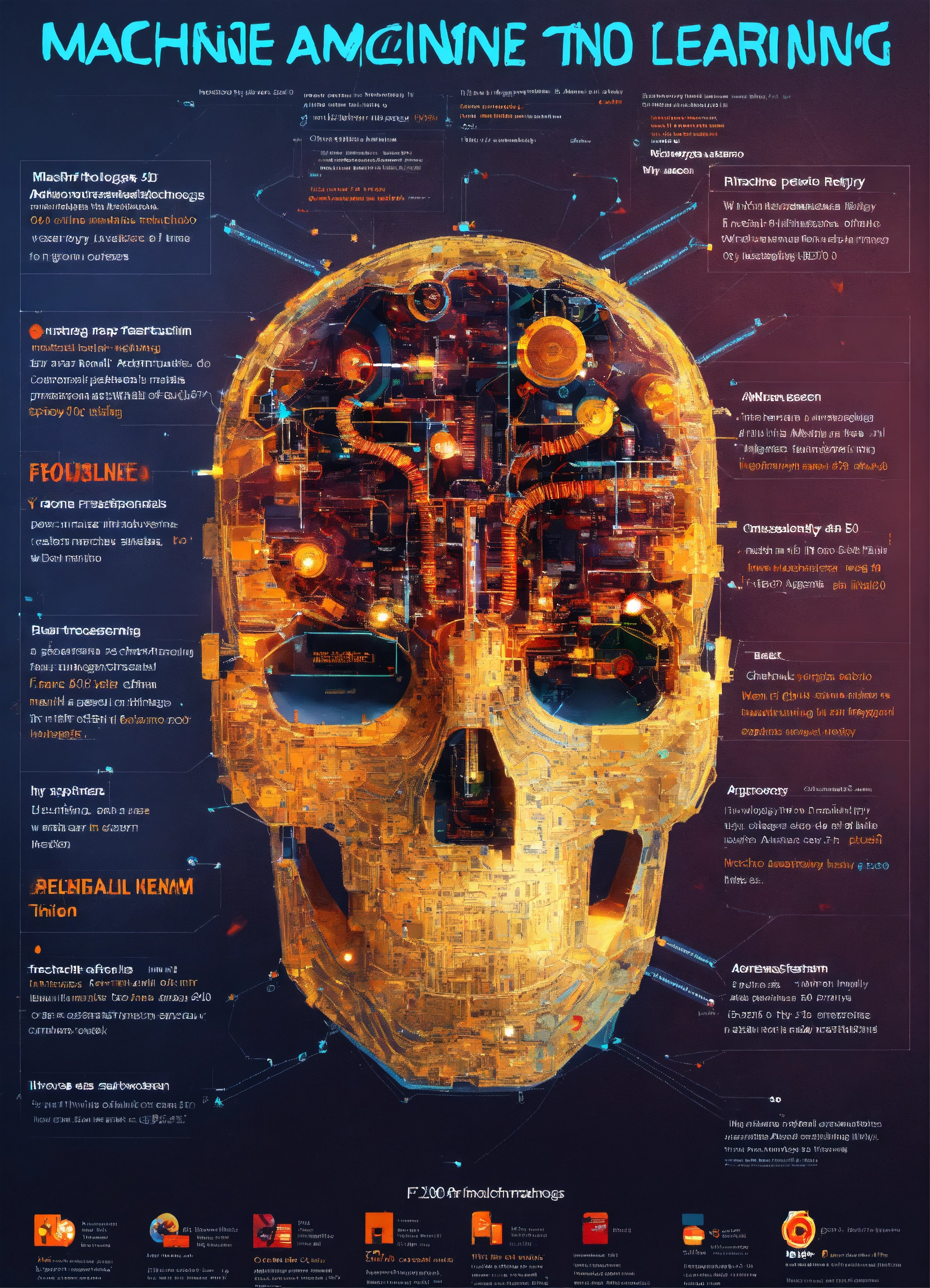
Difference Between Machine Learning and Deep Learning

What is Difference Between Machine Learning and Deep Learning
Machine Learning (ML) involves algorithms that can learn from and make predictions or decisions based on data. It focuses on developing algorithms that improve automatically through experience.
Deep Learning (DL) is a subset of ML that utilizes neural networks with many layers (deep neural networks) to learn from data. DL excels in learning representations of data through hierarchical layers.
Examples of Applications
- Machine Learning Applications:
- Spam detection in emails
- Predicting customer churn for businesses
- Recommendation systems in e-commerce
- Deep Learning Applications:
- Image and speech recognition (e.g., facial recognition, voice assistants)
- Natural language processing (e.g., language translation, sentiment analysis)
- Autonomous vehicles (e.g., object detection, decision-making)
Advantages of Convolutional Neural Networks (CNNs) in Image Recognition Tasks
CNNs are a type of deep neural network specifically designed for processing grid-like data, such as images. They excel in image recognition tasks due to:
- Feature Learning: Automatically learn hierarchical representations of features.
- Spatial Hierarchies: Capture spatial hierarchies of patterns in images.
- Parameter Sharing: Efficiency in learning and computation due to shared weights.
Compared to traditional ML algorithms like SVMs or decision trees, CNNs can achieve superior performance in tasks requiring complex visual pattern recognition, making them ideal for applications such as medical image analysis, autonomous driving, and quality inspection in manufacturing.

Handling Missing or Corrupted Data in a Data Set
Handling missing or corrupted data in a data set is a crucial step in the machine learning process. Missing data can occur due to various reasons such as data collection errors, incomplete surveys, or data transmission errors. Corrupted data can be caused by various factors like data entry errors, data conversion issues, or data storage errors. Both missing and corrupted data can significantly impact the accuracy and reliability of machine learning models.
Types of Missing Data
Missing Completely At Random (MCAR)
MCAR data is missing randomly and is not related to any other variables in the data set. This type of missing data is relatively easy to handle using statistical methods.
Missing At Random (MAR)
MAR data is missing, but the probability of missingness is dependent on other variables in the data set. This type of missing data requires more complex handling methods.
Missing Not At Random (MNAR)
MNAR data is missing, and the probability of missingness is dependent on the missing values themselves. This type of missing data is the most challenging to handle.
Types of Corrupted Data
Data Entry Errors
Data entry errors occur when incorrect or incomplete data is entered into the system. These errors can be caused by human mistakes or software bugs.
Data Conversion Issues
Data conversion issues occur when data is converted from one format to another, resulting in incorrect or incomplete data.
Data Storage Errors
Data storage errors occur when data is stored incorrectly or incompletely due to hardware or software issues.
Handling Missing Data
Listwise Deletion
Listwise deletion involves removing entire rows or observations with missing values. This method is simple but can lead to biased results if the missing data is not random.
Pairwise Deletion
Pairwise deletion involves removing individual values that are missing, rather than entire rows or observations. This method is more efficient than listwise deletion but can still lead to biased results.
Imputation
Imputation involves replacing missing values with estimated values based on other variables in the data set. There are several imputation methods, including:
Mean Imputation
Mean imputation replaces missing values with the mean of the variable.
Median Imputation
Median imputation replaces missing values with the median of the variable.
Regression Imputation
Regression imputation uses a regression model to estimate missing values.
K-Nearest Neighbors (KNN) Imputation
KNN imputation uses the KNN algorithm to find the most similar observations and impute missing values based on their values.
Multiple Imputation
Multiple imputation involves creating multiple imputed data sets and analyzing each one separately. This method is more robust than single imputation methods.
Handling Corrupted Data
Data Cleaning
Data cleaning involves identifying and correcting errors in the data. This can be done manually or using automated tools.
Data Validation
Data validation involves checking the data for errors and inconsistencies. This can be done using data validation rules or automated tools.
Data Standardization
Data standardization involves converting data into a standard format to ensure consistency and accuracy.
Data Normalization
Data normalization involves scaling data to a common range to prevent features with large ranges from dominating the model.
Conclusion
Handling missing or corrupted data in a data set is a critical step in the machine learning process. By understanding the types of missing and corrupted data, you can choose the appropriate methods to handle them. Listwise deletion, pairwise deletion, imputation, and multiple imputation are common methods for handling missing data. Data cleaning, data validation, data standardization, and data normalization are common methods for handling corrupted data. By following these methods, you can ensure that your machine learning models are accurate and reliable.
Table: Handling Missing Data Methods
Method | Description | Advantages | Disadvantages |
Listwise Deletion | Remove entire rows or observations with missing values | Simple | Biased results if missing data is not random |
Pairwise Deletion | Remove individual values that are missing | More efficient than listwise deletion | Biased results if missing data is not random |
Imputation | Replace missing values with estimated values | Robust | May not accurately capture missing data patterns |
Multiple Imputation | Create multiple imputed data sets and analyze each one separately | Most robust | Computationally intensive |
Table: Handling Corrupted Data Methods
Method | Description | Advantages | Disadvantages |
Data Cleaning | Identify and correct errors in the data | Effective | Time-consuming |
Data Validation | Check the data for errors and inconsistencies | Efficient | May not catch all errors |
Data Standardization | Convert data into a standard format | Consistent | May lose information |
Data Normalization | Scale data to a common range | Prevents feature dominance | May lose information |
Preventing Overfitting in Machine Learning Models
Overfitting is a common challenge in machine learning, where a model performs exceptionally well on the training data but fails to generalize to new, unseen data. This can lead to poor model performance and unreliable predictions. Preventing overfitting is crucial for developing robust and effective machine learning models. In this article, we will explore various techniques to mitigate overfitting and ensure your models are able to generalize well.
Understanding Overfitting
Overfitting occurs when a machine learning model becomes too complex and fits the training data too closely, capturing noise and random fluctuations in the data. This results in the model performing well on the training data but failing to perform well on new, unseen data. Overfitting can be caused by several factors, including:
- High Model Complexity: Models with too many parameters or features can easily fit the training data, but may not generalize well to new data.
- Insufficient Training Data: When the training data is limited, the model may overfit to the available data, failing to capture the true underlying patterns.
- Noise in the Data: If the training data contains a significant amount of noise or irrelevant features, the model may learn these patterns instead of the true underlying relationships.
Techniques to Prevent Overfitting
To prevent overfitting and ensure your machine learning models generalize well, you can employ the following techniques:
- Cross-Validation:Description
- Regularization:Description
- Early Stopping:Description
- Dropout:Description
- Feature Selection:Description
- Data Augmentation:Description
Choosing the Right Techniques
The choice of techniques to prevent overfitting will depend on the specific problem, the available data, and the complexity of the machine learning model. It is often beneficial to experiment with a combination of these techniques to find the most effective approach for your use case.
Table: Techniques to Prevent Overfitting
Technique | Description | Advantages | Disadvantages |
Cross-Validation | Splitting data into training and validation sets | Assesses generalization ability | Computationally intensive |
Regularization | Adds a penalty term to the model’s objective function | Encourages simpler, more generalizable models | Requires tuning of hyperparameters |
Early Stopping | Stops training when validation performance stops improving | Prevents overfitting to training data | Requires a separate validation set |
Dropout | Randomly “drops out” neurons during training | Reduces overfitting in deep learning models | Requires tuning of dropout rate |
Feature Selection | Identifies and selects the most relevant features | Reduces model complexity and overfitting | May miss important features |
Data Augmentation | Creates new, synthetic training data | Increases diversity of training data | Requires careful design of transformations |
Conclusion
Preventing overfitting is a crucial aspect of developing effective machine learning models. By understanding the causes of overfitting and employing techniques such as cross-validation, regularization, early stopping, dropout, feature selection, and data augmentation, you can create models that generalize well to new, unseen data. Remember to experiment with a combination of these techniques and continuously evaluate your model’s performance to ensure it is robust and reliable.
Implementing the Euclidean Distance Function in Python
The Euclidean distance is a fundamental concept in machine learning and data analysis. It is used to measure the distance between two points in a multi-dimensional space. In this article, we will explore how to implement the Euclidean distance function in Python.
What is the Euclidean Distance?
The Euclidean distance is a measure of the straight-line distance between two points in a multi-dimensional space. It is calculated as the square root of the sum of the squares of the differences between corresponding coordinates.
Implementing the Euclidean Distance Function
To implement the Euclidean distance function in Python, you can use the following code:
python
import math
def euclidean_distance(point1, point2):
“””
Calculate the Euclidean distance between two points.
Args:
point1 (list): The first point.
point2 (list): The second point.
Returns:
float: The Euclidean distance between the two points.
“””
return math.sqrt(sum((a – b) ** 2 for a, b in zip(point1, point2)))
Example Usage
Here is an example of how to use the Euclidean distance function:
python
point1 = [1, 2, 3]
point2 = [4, 5, 6]
distance = euclidean_distance(point1, point2)
print(distance)
Table: Euclidean Distance Formula
Variable | Description |
𝑥1 x 1 | The x-coordinate of the first point. |
𝑥2 x 2 | The x-coordinate of the second point. |
𝑦1 y 1 | The y-coordinate of the first point. |
𝑦2 y 2 | The y-coordinate of the second point. |
𝑧1 z 1 | The z-coordinate of the first point. |
𝑧2 z 2 | The z-coordinate of the second point. |
𝑑 d | The Euclidean distance between the two points. |
Frequently Asked Questions
What is the main difference between machine learning and deep learning?
The main difference between machine learning and deep learning is the complexity of the algorithms used and the amount of data required. Machine learning uses simpler algorithms like linear regression or decision trees that can learn from a relatively small amount of data. Deep learning, on the other hand, uses artificial neural networks with multiple layers that can learn complex patterns from large datasets.
Deep learning algorithms require much less human intervention compared to traditional machine learning. Deep learning can automatically extract features and learn from its own errors, while machine learning often requires a human to manually choose features and adjust the algorithm.
What is the difference between AI, ML, and DL?
Artificial intelligence (AI) is a broad field that aims to build machines capable of intelligent behavior. Machine learning (ML) is a subset of AI that allows computers to learn from data without being explicitly programmed. Deep learning (DL) is a specialized subset of machine learning that uses artificial neural networks to process and analyze complex data like images, text, and speech.
In summary, AI is the overarching field, ML is a technique within AI, and DL is a specific ML approach that has shown great success in areas like computer vision and natural language processing.
What is the difference between applied machine learning and deep learning?
Applied machine learning refers to the practical application of machine learning techniques to solve real-world problems. It involves selecting appropriate algorithms, preprocessing data, training models, and deploying them in production environments.
Deep learning is a specific type of applied machine learning that uses artificial neural networks. Deep learning models are particularly effective at learning from large, unstructured datasets and can achieve state-of-the-art performance in tasks like image recognition, language translation, and speech synthesis.
The main differences are:
- Deep learning uses more complex neural network architectures compared to traditional machine learning algorithms
- Deep learning requires much larger datasets to train effectively
- Deep learning models can often achieve higher accuracy than classical machine learning approaches on challenging tasks
However, both applied machine learning and deep learning share the same goal of leveraging data to build intelligent systems that can automate decision-making and generate valuable insights
Get Curated Post Updates!
Sign up for my newsletter to see new photos, tips, and blog posts.

SEO-savvy content writer and technical specialist with over 5 years of cross-industry experience. MBA graduate dedicated to crafting impactful narratives for your brand.





